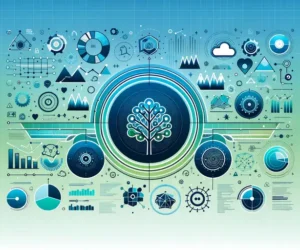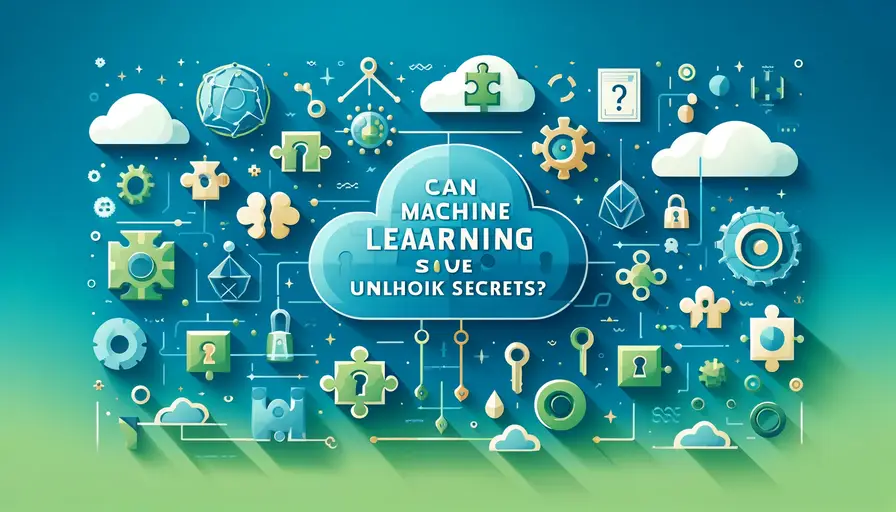
Can Machine Learning Solve Complex Puzzles?

Analyzing Patterns in Puzzles
Yes, machine learning can analyze patterns in complex puzzles and uncover their secrets. By leveraging advanced algorithms, machine learning models can identify hidden patterns and correlations that may be difficult for humans to detect.
The Power of Pattern Recognition
Pattern recognition is a fundamental capability of machine learning. Algorithms can be trained to recognize patterns in data, which is essential for solving puzzles. For instance, machine learning models can analyze sequences and structures in puzzles, identifying commonalities and anomalies that can lead to solutions.
By examining vast amounts of puzzle data, machine learning algorithms can detect recurring themes and motifs. This ability to discern patterns is not only useful for solving existing puzzles but also for predicting and generating new ones.
Unraveling Puzzle Logic
Unraveling the logic behind puzzles involves understanding the rules and constraints that govern them. Machine learning models can be trained to comprehend these rules by learning from examples. For instance, algorithms can be fed data from solved puzzles to learn the steps and strategies used in their solutions.
Once the model understands the underlying logic, it can apply this knowledge to solve new puzzles. This approach is particularly effective for puzzles with well-defined rules, such as Sudoku or logic puzzles, where the solution requires a systematic application of constraints.
Unlocking Puzzle Secrets
By recognizing patterns and understanding logic, machine learning can unlock the secrets of complex puzzles. This process involves both training and application phases, where the model learns from data and then uses this knowledge to solve puzzles.
Here's an example of using a machine learning model to solve Sudoku puzzles in Python:
import numpy as np
from sklearn.linear_model import LogisticRegression
# Sample Sudoku puzzle (0 represents empty cells)
puzzle = np.array([
[5, 3, 0, 0, 7, 0, 0, 0, 0],
[6, 0, 0, 1, 9, 5, 0, 0, 0],
[0, 9, 8, 0, 0, 0, 0, 6, 0],
[8, 0, 0, 0, 6, 0, 0, 0, 3],
[4, 0, 0, 8, 0, 3, 0, 0, 1],
[7, 0, 0, 0, 2, 0, 0, 0, 6],
[0, 6, 0, 0, 0, 0, 2, 8, 0],
[0, 0, 0, 4, 1, 9, 0, 0, 5],
[0, 0, 0, 0, 8, 0, 0, 7, 9]
])
# Train model (simplified example)
model = LogisticRegression()
X_train = ... # Training data
y_train = ... # Training labels
model.fit(X_train, y_train)
# Predict missing numbers
for i in range(9):
for j in range(9):
if puzzle[i, j] == 0:
puzzle[i, j] = model.predict(...) # Predict based on model
print(puzzle)Solving Puzzles with Algorithms
By training machine learning algorithms on puzzle data, they can learn to solve complex puzzles. This process involves feeding the algorithm with numerous examples of puzzles and their solutions, enabling it to learn the strategies and techniques required for solving.
Approaching Puzzle-Solving
Machine learning approaches puzzle-solving by breaking down the problem into smaller, manageable parts. The algorithm identifies patterns and relationships within the data, using this information to make predictions or decisions. This method is effective for a wide range of puzzles, from simple logic puzzles to more complex ones involving multiple layers of rules and constraints.
The Role of Training Data
Training data is crucial for the success of machine learning models in puzzle-solving. High-quality, diverse datasets allow the algorithm to learn various strategies and adapt to different types of puzzles. For example, a model trained on a broad range of Sudoku puzzles will perform better than one trained on a limited set.
The data should include both solved and unsolved puzzles, providing the algorithm with examples of the steps required to reach a solution. This helps the model understand the progression from the initial state to the final solution.
Potential Applications
The potential applications of machine learning in puzzle-solving are vast. Beyond entertainment, these algorithms can be used in fields such as cryptography, where solving complex puzzles is essential. They can also assist in scientific research, helping to decode complex patterns in data and uncovering new insights.
Machine learning can identify hidden patterns and correlations in puzzles that humans may overlook. By analyzing vast datasets, these algorithms can detect subtle clues and relationships that are not immediately apparent.
Detecting Subtle Clues
Detecting subtle clues involves examining the data at a granular level. Machine learning algorithms can process large amounts of information quickly, identifying minute details and patterns that might be missed by human solvers. This capability is particularly useful in complex puzzles where the solution depends on recognizing intricate relationships.
Correlations and Relationships
Machine learning models can uncover correlations and relationships within puzzle data. For instance, in a jigsaw puzzle, an algorithm might identify pieces that fit together based on color gradients and edge patterns. In crossword puzzles, it might detect connections between clues and answers that are not immediately obvious.
Enhancing Human Insight
By identifying hidden patterns, machine learning can enhance human insight into puzzles. This collaborative approach allows humans to leverage the computational power of algorithms while applying their intuition and experience to solve complex problems more effectively.
Iterative Learning for Improvement
Through iterative learning, machine learning can improve its puzzle-solving abilities over time. By continually refining its models based on new data and feedback, the algorithm becomes more adept at solving puzzles.
Training Datasets
Training datasets play a critical role in iterative learning. As the model is exposed to more examples, it learns from its mistakes and successes, gradually improving its performance. This continuous learning process enables the algorithm to adapt to new types of puzzles and challenges.
Potential Applications
The potential applications of machine learning in puzzle-solving extend to various domains. For example, in cybersecurity, algorithms can detect and solve complex encryption puzzles, enhancing data protection. In healthcare, machine learning can help decode genetic puzzles, leading to breakthroughs in personalized medicine.
Generating Solutions with Data
Machine learning can help generate solutions to complex puzzles by leveraging vast amounts of data. This approach combines data analysis with predictive modeling to create effective solutions.
Unleashing Machine Learning
Unleashing the power of machine learning on puzzles involves using advanced algorithms to process and analyze large datasets. These models can identify patterns and predict solutions with high accuracy, making them invaluable tools for puzzle-solving.
Future of Puzzle-Solving
The future of puzzle-solving with machine learning looks promising. As algorithms become more sophisticated and datasets grow larger, machine learning will continue to enhance its capabilities, solving increasingly complex puzzles and unlocking new possibilities.
Gaining Insights into Puzzles
By applying machine learning to puzzles, researchers can gain insights into their underlying structures and mechanisms. This approach helps in understanding the fundamental principles that govern puzzle design and solution strategies.
Approaching Puzzles
Approaching puzzles with machine learning involves analyzing the data to uncover hidden patterns and strategies. Algorithms can identify the key elements that contribute to a solution, providing a deeper understanding of the puzzle's structure.
Uncovering hidden patterns and strategies is a significant advantage of using machine learning. These insights can be applied to various types of puzzles, from simple logic puzzles to complex cryptographic challenges, enhancing our ability to solve them.
Unlocking Secrets
Machine learning can help unlock the secrets of puzzles by revealing the underlying mechanisms that drive their solutions. This knowledge can be applied to create new puzzles, improve existing ones, and develop more effective solving strategies.
Solving Complex Puzzles
Machine learning can assist in solving puzzles that involve large datasets or complex calculations. Algorithms can process and analyze data quickly, providing efficient solutions to challenging problems.
Handling Large Datasets
Handling large datasets is a strength of machine learning. Algorithms can analyze vast amounts of data, identifying patterns and relationships that are crucial for solving puzzles. This capability is essential for puzzles that require processing extensive information.
Complex Calculations
Machine learning can perform complex calculations with ease, making it suitable for puzzles that involve intricate mathematical or logical operations. Algorithms can solve problems faster and more accurately than humans, especially when dealing with high-dimensional data.
Providing Efficient Solutions
With the ability to process and analyze large amounts of data, machine learning can provide efficient solutions to complex puzzles. This approach leverages computational power to solve problems that would be challenging for humans alone.
Algorithms and Puzzle-Solving
Machine learning algorithms are designed to tackle complex problems by breaking them down into smaller, manageable parts. This method is effective for solving puzzles, where each step of the solution can be approached systematically.
Unlocking Secrets
By processing large datasets and performing complex calculations, machine learning can unlock the secrets of puzzles, providing insights and solutions that were previously unattainable.
Automating Puzzle-Solving
Machine learning can automate the process of solving complex puzzles, saving time and effort. Automated systems can analyze puzzles and generate solutions quickly, freeing up human resources for other tasks.
Automating Processes
Automating the puzzle-solving process involves using algorithms to handle repetitive and time-consuming tasks. This approach increases efficiency and allows for the rapid solving of large numbers of puzzles.
Unlocking Secrets
Automation also helps in unlocking the secrets of complex puzzles by providing consistent and accurate solutions. This capability is valuable for applications where speed and precision are critical.
Combining ML and Human Expertise
By combining machine learning with human expertise, puzzles can be solved more effectively and efficiently. This collaborative approach leverages the strengths of both machines and humans.
Human Expertise
Human expertise provides intuition, creativity, and experience that are invaluable for solving puzzles. When combined with the computational power of machine learning, it results in a more robust and effective problem-solving approach.
Efficient and Accurate Solving
The combination of efficient and accurate solving techniques from machine learning and the nuanced understanding of humans leads to better outcomes. This synergy can be applied to various domains, enhancing our ability to tackle complex puzzles.
Unlocking Secrets
By working together, machines and humans can unlock the secrets of puzzles more effectively. This collaboration opens up new possibilities for solving problems and gaining insights into complex challenges.
Machine learning holds significant potential for solving complex puzzles and unlocking their secrets. By analyzing patterns, recognizing hidden correlations, and leveraging vast amounts of data, machine learning algorithms can provide efficient and accurate solutions. Combining these capabilities with human expertise further enhances our ability to tackle challenging puzzles, leading to new discoveries and advancements.
If you want to read more articles similar to Can Machine Learning Solve Complex Puzzles?, you can visit the Applications category.



You Must Read